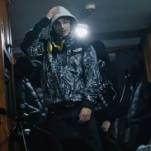Immediately after the credits, the movie stumbles further. Bonsignore calls residents pretending to be a voice from heaven, in a misguided attempt to simultaneously cheer them up and pass the time. A life-skills therapist teaches her clients how to avoid con men with the help of her "assertiveness monkey" puppet. The old folks themselves bicker, swear, and generally act like precociously adorable moppets all grown up and gone gray. Assisted Living is one of those low-budget projects that claim to blur the line between reality and fiction, but that just means it was shot on location and some of the cast is non-professional. Any found-art quality to the elders' non sequiturs has been stifled by Greenebaum's imposition of a dramatic structure: He makes the film about Bonsignore's relationship with the scattered Maggie Riley, who teaches him to not to confuse mere pacification with real help.
Assisted Living gets a little better as it wears on, and at least it's refreshingly short. Greenebaum gives the film a lot of style, throwing in time-lapse photography, first-person tracking shots, and striking extreme close-ups of old people fumbling with socks and puzzles. And his improvisatory methods lead to a few vivid moments: a visiting toddler accidentally hurting her hand, Bonsignore and Riley walking down the hall on a quiet afternoon, volunteers singing happy songs in common rooms, the chronically ill wailing in their secluded infirmary, and so on. In one of the most poignant fragments, the residents in the TV lounge channel-surf past Jerry Springer, kung-fu films, and televangelists, battered by images no longer targeted toward them. It's a truthful scene, until the oldsters open their mouths and start play-acting, at which point reality melts away.









































